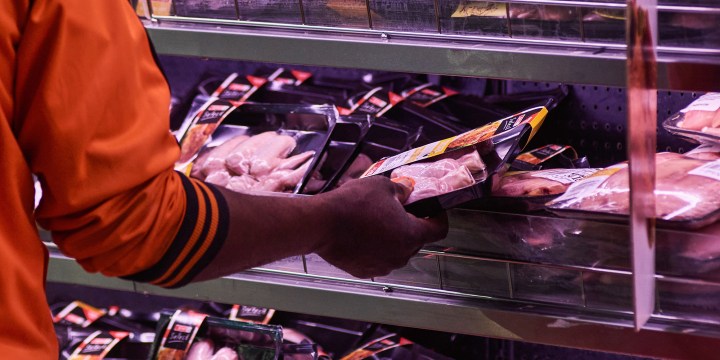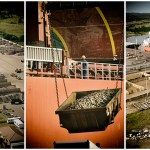FOUL PLAY
SA Reserve Bank takes dim view of poultry tariffs that harm the poor

The Monetary Policy Review talks about import tariffs on chicken — the main source of protein in low-income households — as an example of increasing protectionism that contributes to inflation in SA.
The latest edition of the biannual Monetary Policy Review (MPR) of the South African Reserve Bank featured a discourse on chickens and the economic consequences of misguided economic policy coming home to roost.
To wit, the MPR took a look at the inflationary impact on South Africans of the imposition of tariffs on frozen chicken imports. Turns out it can heat prices up and the poor, as usual, bear the brunt.
“South Africa’s trade liberalisation of the 2000s helped to increase domestic competition and lower the prices of traded goods for the domestic consumer,” the MPR said.
“However, trade measures have been increased in recent years to protect domestic industries, as is reflected in the rising aggregate tariff rates for consumer goods.”
These would have been cooked up by the Department of Trade and Industry, which, in its efforts to protect South African industry, has often unwittingly hastened the pace of deindustrialisation.
Its policies can also fuel inflation as South African consumers wind up paying more for imports that should be cheaper but are not, because of tariffs.
“The poultry sector has seen extensive use of protective trade measures by South Africa in recent years. Customs duties on frozen whole chicken and bone-in pieces have more than trebled between 2013 and 2022, increasing from 27% to 82% and from 18% to 62%, respectively.
“This has contributed to the rising prices of frozen chicken meat and declining imports, with the effects exacerbated by anti-dumping duties,” the MPR said.
“Frozen chicken experienced a cumulative increase in most favoured nation (MFN) tariffs from 18% in 2010 to 62% in 2021, increasing consumer prices by between 13% and 40%,” it added.
Visit Daily Maverick’s home page for more news, analysis and investigations
The impact is illustrated in the chart, which shows how the consumer price index for frozen chicken has diverged sharply in recent years from that of pork.
The MPR went on to note that because chicken is the main source of protein for low-income households in South Africa, poultry tariffs are “regressive”.
“To this end, the temporary suspension of tariffs on chicken imports announced by government should support the purchasing power of, and the real consumption by, lower-income South Africans. Looking ahead, greater use of economy-wide cost-benefit analyses for sectoral trade policy considerations could provide better insights into the long-run impact of tariffs,” it said.
The message: perhaps keeping the tariff suspension on poultry parts in place is no bad thing. That was the Reserve Bank’s polite way of trying to inject some sense into wider government policy.
“Poultry inflation increased by 11.0% in July from 7.1% a year earlier,” the MPR said. Rising input costs are also pushing up the price of chicken as producers pass these costs on to consumers.
This comes against the backdrop of surging food inflation, which is taking a toll on poorer households in South Africa and worldwide.
Indeed, the MPR noted that food inflation has yet to peak in South Africa, lagging behind global trends in recent months.
Though consumer and producer price inflation in South Africa both moderated from decade-and-a-half highs in August, food price inflation remains on the accelerator. The food and non-alcoholic beverages component of CPI raced to 11.3% in August from 9.7% in July, even though global foodstuff prices have been easing.
It’s always worth noting that Russia’s war in Ukraine has been a key driver of food inflation, a fact lost on the Kremlin’s boosters in the ANC. South Africans are poorer and hungrier because of Putin’s war, and this extends well beyond the price of chicken.
“After registering 21.2% in April 2022, domestic oils and fats inflation surged to 37.6% in August, reflecting sharply higher global prices due to tight supplies and a weaker rand exchange rate.
“In August 2022, oils and fats alone contributed 0.2 percentage points to headline inflation and 1.0 percentage points to food inflation.
“Despite the recent drop in global price inflation for oils and fats from 58.0% in March 2022 to -1.5% in August, benefits to South African consumers may be delayed since changes in global prices pass through to their domestic counterparts with a lag of up to five months,” the MPR said.
And social unrest is one of the chickens that could come home to roost on this front. DM168
This story first appeared in our weekly Daily Maverick 168 newspaper, which is available countrywide for R25.



















 Become an Insider
Become an Insider
Comments - Please login in order to comment.